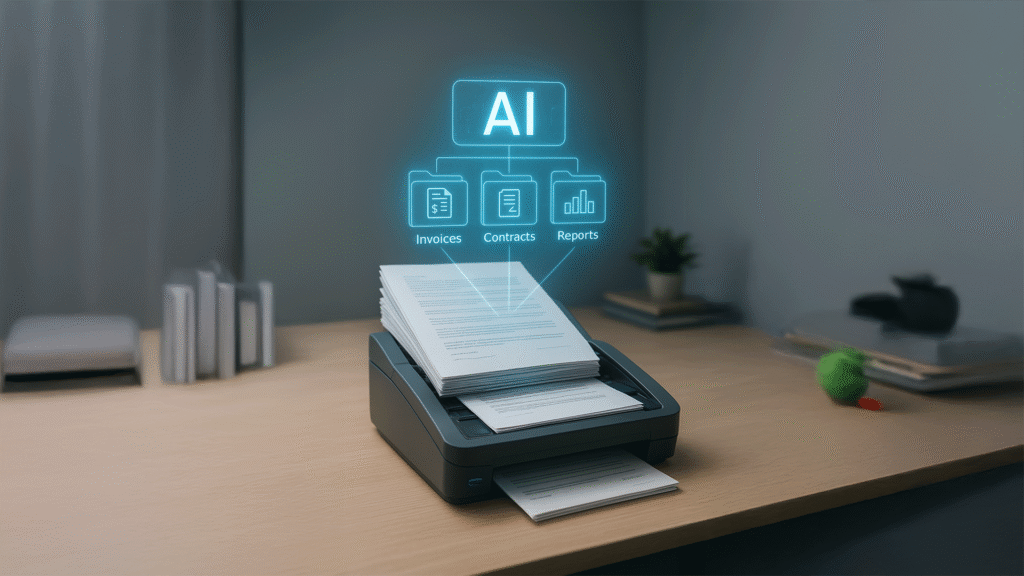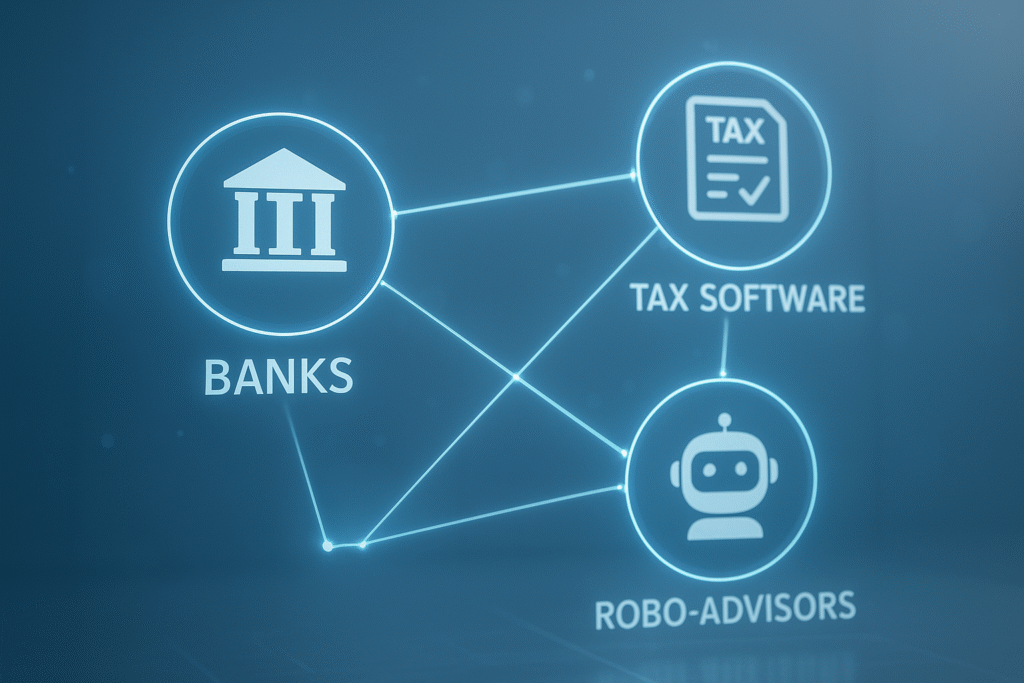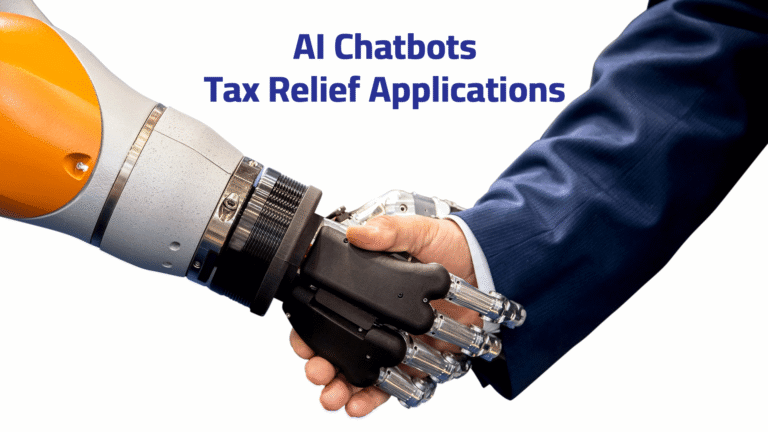The intersection of artificial intelligence and financial technology has fundamentally transformed how taxpayers approach tax relief applications. Gone are the days of lengthy paperwork, confusing forms, and months-long waiting periods. Today’s AI-powered chatbots and robo-advisors are streamlining these processes through sophisticated fintech platforms, making tax relief more accessible than ever before.
The Traditional Tax Relief Challenge
Historically, applying for tax relief has been a daunting process. Taxpayers faced complex eligibility requirements, extensive documentation needs, and bureaucratic delays that could stretch for months. The complexity often deterred eligible individuals from seeking relief they were entitled to, leaving billions in unclaimed tax benefits on the table each year.
Traditional tax relief applications typically required:
- Manual completion of lengthy forms
- Physical document submission
- Multiple office visits or phone calls
- Extended processing times
- Limited guidance on eligibility requirements

How AI Chatbots Are Transforming Tax Relief Applications
Intelligent Document Processing
Modern AI chatbots equipped with natural language processing (NLP) capabilities can instantly analyze tax documents, identify relevant information, and auto-populate application forms. These systems use optical character recognition (OCR) technology to extract data from uploaded documents like W-2s, 1099s, and previous tax returns, reducing manual data entry errors by up to 90%.
24/7 Accessibility and Instant Support
Unlike traditional tax offices with limited hours, AI chatbots provide round-the-clock assistance. Taxpayers can initiate applications, ask questions, and receive guidance at any time, significantly improving the user experience. These chatbots can handle thousands of simultaneous conversations, eliminating wait times and providing immediate responses to common tax relief queries.
Personalized Eligibility Assessment
AI algorithms analyze individual tax situations against current tax codes and relief programs to determine eligibility in real-time. By processing factors like income levels, family size, filing status, and specific circumstances, these systems can identify applicable relief programs that taxpayers might not have known existed.
Multi-Language Support
Advanced AI chatbots offer support in multiple languages, breaking down barriers for non-English speaking taxpayers. This inclusivity ensures that tax relief programs reach underserved communities that previously struggled with language barriers in traditional application processes.
The Rise of AI and Robo-Advisors: Redefining Financial Strategiesinthe Digital Age
The Role of Robo-Advisors in Tax Relief Strategy
Automated Tax Planning
Robo-advisors use sophisticated algorithms to analyze taxpayers’ financial situations and recommend optimal tax relief strategies. These platforms can suggest timing for relief applications, identify potential deductions, and even project future tax scenarios to maximize benefits.
Risk Assessment and Compliance
AI-powered robo-advisors continuously monitor tax law changes and assess compliance risks for relief applications. This proactive approach helps prevent application rejections due to regulatory changes or incomplete information, improving success rates significantly.
Portfolio Integration
For taxpayers with investment portfolios, robo-advisors can integrate tax relief applications with broader financial planning strategies. This holistic approach ensures that relief benefits align with long-term financial goals and investment strategies.
Fintech Platforms: The Backbone of AI Tax Relief
Seamless Integration Capabilities
Modern fintech platforms serve as the foundation for AI-driven tax relief solutions. These platforms integrate with banking systems, credit bureaus, and government databases to create comprehensive financial profiles that support accurate relief calculations and faster processing.
Enhanced Security Measures
Fintech platforms employ advanced cybersecurity measures including encryption, multi-factor authentication, and blockchain technology to protect sensitive tax information. These security protocols often exceed those of traditional tax preparation services, providing taxpayers with greater confidence in digital applications.
Real-Time Status Tracking
Unlike traditional paper-based systems, fintech platforms offer real-time tracking of application status. Taxpayers can monitor their relief applications through user-friendly dashboards, receiving automatic updates on processing milestones and any required additional documentation.
API-Driven Connectivity
Fintech platforms leverage Application Programming Interfaces (APIs) to connect with various government systems and tax databases. This connectivity enables instant verification of taxpayer information and faster processing of relief applications.
Key Benefits of AI-Powered Tax Relief Solutions
Increased Accuracy
AI systems reduce human error in tax relief applications by automatically validating information against multiple data sources. Machine learning algorithms continuously improve accuracy by learning from processed applications and identifying common error patterns.
Cost Reduction
Automated processing significantly reduces the cost of tax relief applications for both taxpayers and government agencies. Studies show that AI-driven applications can reduce processing costs by up to 70% compared to traditional manual methods.
Faster Processing Times
What once took weeks or months can now be completed in days or even hours. AI chatbots can process applications instantly, while robo-advisors can analyze complex tax situations in minutes rather than hours of human review.
Improved Compliance
AI systems stay updated with the latest tax regulations and automatically apply current rules to relief applications. This real-time compliance checking reduces application rejections and ensures taxpayers receive maximum eligible benefits.
Also Read: 10 Best AI Tools for Legal Consultation
Popular AI Tax Relief Platforms
TurboTax Live
Intuit’s TurboTax Live combines AI chatbots with human expertise, offering taxpayers instant guidance while maintaining access to certified tax professionals when needed. The platform’s AI can identify potential relief opportunities and guide users through application processes.
H&R Block’s Virtual Assistant
H&R Block’s AI-powered virtual assistant helps taxpayers navigate complex relief applications while providing personalized recommendations based on individual tax situations. The platform integrates with multiple fintech services for comprehensive financial analysis.
FreeTaxUSA’s Smart Tools
FreeTaxUSA employs AI algorithms to identify tax relief opportunities and automatically apply relevant credits and deductions. Their chatbot system guides users through eligibility requirements and simplifies application processes.

Challenges and Limitations
Data Privacy Concerns
While fintech platforms employ robust security measures, taxpayers remain concerned about sharing sensitive financial information with AI systems. Platforms must continuously invest in cybersecurity and transparency to maintain user trust.
Complex Case Limitations
AI systems excel at routine applications but may struggle with highly complex or unusual tax situations that require human judgment and expertise. Most platforms address this by providing escalation paths to human tax professionals.
Regulatory Compliance
The rapidly evolving nature of tax laws presents ongoing challenges for AI systems. Platforms must continuously update their algorithms to remain compliant with changing regulations across different jurisdictions.
The Future of AI in Tax Relief
Advanced Machine Learning
Future AI tax relief systems will incorporate more sophisticated machine learning models that can handle increasingly complex tax scenarios. These systems will learn from millions of processed applications to provide even more accurate and personalized recommendations.
Blockchain Integration
Emerging blockchain technologies promise to enhance security and transparency in tax relief applications. Distributed ledger systems could provide immutable records of applications and payments while ensuring data privacy.
Predictive Analytics
AI systems are evolving to predict future tax relief needs based on economic trends and individual financial patterns. This predictive capability will enable proactive relief recommendations and better financial planning.
Voice-Activated Assistance
Voice recognition technology is being integrated into tax relief platforms, allowing taxpayers to interact with AI systems through natural speech. This advancement will make tax relief applications even more accessible to users with varying technical comfort levels.
Best Practices for Using AI Tax Relief Platforms
Verify Information Accuracy
While AI systems are highly accurate, taxpayers should always review auto-populated information for correctness. Double-checking key figures and personal details helps prevent processing delays.
Keep Documentation Organized
Maintain digital copies of all relevant tax documents in organized folders. This preparation enables faster interaction with AI systems and ensures all necessary information is readily available.
Understand Platform Limitations
Recognize when your tax situation may be too complex for automated processing. Don’t hesitate to escalate to human professionals when AI recommendations seem unclear or insufficient.
Stay Informed About Updates
Follow platform updates and tax law changes that might affect your relief applications. Many platforms offer notification services to keep users informed about relevant changes.
Conclusion
The integration of AI chatbots and robo-advisors into fintech platforms has revolutionized tax relief applications, making them more accessible, accurate, and efficient than ever before. These technological advances have democratized access to tax relief programs, helping millions of taxpayers claim benefits they might have otherwise missed.
As AI technology continues to evolve, we can expect even more sophisticated solutions that will further simplify tax relief processes while maintaining the security and compliance standards that taxpayers require. The future of tax relief lies in the seamless integration of artificial intelligence, financial technology, and user-centric design.
For taxpayers considering AI-powered tax relief platforms, the benefits far outweigh the limitations. These systems offer unprecedented convenience, accuracy, and accessibility, making tax relief applications a straightforward process rather than a bureaucratic challenge. As we move forward, the continued advancement of AI in tax relief applications promises to make the tax system more equitable and user-friendly for all.
About the Author: This article explores the latest developments in AI-powered tax relief solutions and their impact on the fintech industry. For more insights on financial technology trends and tax optimization strategies, continue following our coverage of emerging fintech innovations.
Subscribe for Newsletter

